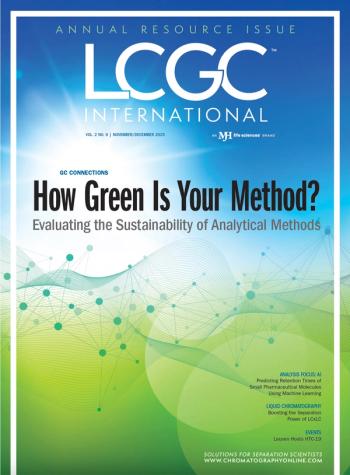
- The Column-03-20-2013
- Volume 0
- Issue 5
Biomarker for river blindness discovered
Scientists at The Scripps Institute (California, USA) have used liquid chromatography?mass spectrometry (LC?MS) to identify a new biomarker for the diagnosis of river blindness.1
Scientists at The Scripps Institute (California, USA) have used liquid chromatography–mass spectrometry (LC–MS) to identify a new biomarker for the diagnosis of river blindness.1 The discovery is an important step towards the development of a portable diagnostic test for use in the field.
River blindness affects 37 million people worldwide and is focused specifically in sub-Saharan Africa, Central and South America and Yemen. The disease is caused by nematode (Onchocerca volvulus) larvae transmitted by blackfly (Simulium sp.). In an attempt to kill the larvae, the body mounts an inflammatory immune response, indirectly damaging the eye and other body tissues.
The team analysed the urinary metabolome of infected and uninfected patients, identifying one particular protein that became elevated in the urine of infected patients. High performance liquid chromatography (HPLC) was performed to concentrate the protein and LC–MS was able to identify the chemical structure as N-acetyltyramine-O,ß-glucoronide.
The analysis was not as straightforward as initially hoped. The small, then unknown, molecule was not immediately identifiable. Daniel Globisch, a postdoctoral fellow in the Janda laboratory, studied the available literature referencing the metabolome of the nematode and pinpointed the metabolite source. The molecule was a breakdown product of a neurotransmitter produced by young larvae, excreted into the urine at higher levels during an active infection.
“It’s a spectacular find in terms of biomarkers as it does not occur naturally in humans,” said Globisch. Lead investigator Professor Janda advanced on this stating that for the findings to be of value in Third World countries it would need to be developed into a portable instrument, “basically distilling our finding to a test that can be carted around in a backpack”.
According to the authors, the theory behind the investigation should be applicable to the diagnosis of other worm infection-induced diseases.
Reference
1. D. Globisch, A. Moreno, M.S Hixon, A.A.K. Nunes, J.R. Denery,S. Specht, A. Hoerauf and K.D. Janda, PNAS, DOI: 10.1073/pnas.1221969110 (2013).
Articles in this issue
almost 13 years ago
Bruker expands Indian operationsalmost 13 years ago
A Testing Time...almost 13 years ago
Agilent supports cancer research centeralmost 13 years ago
GC-MS detects stress levelsNewsletter
Join the global community of analytical scientists who trust LCGC for insights on the latest techniques, trends, and expert solutions in chromatography.



